
Student Projects
VE/VM450

Large-Scale EV Charging Coordination Simulation and Animation Platform
Instructors: Prof. Chengbin Ma
Team Members: Shiyu Shen, Qi Sun, Jing Wang, Yue Wang, Hexin Zhang
Project Video
Team Members

Team Members:
Shiyu Shen, Qi Sun, Jing Wang, Yue Wang, Hexin Zhang
Instructors:
Prof. Chengbin Ma
Project Description
Problem Statement
Predictable energy crisis and growing environmental concerns have led a trend to pursue new energy substitutes in various environmental-consuming fields. The main purpose of the project is to develop a platform simulating electric vehicles charging process with vivid scenarios, and a user-friendly interface.
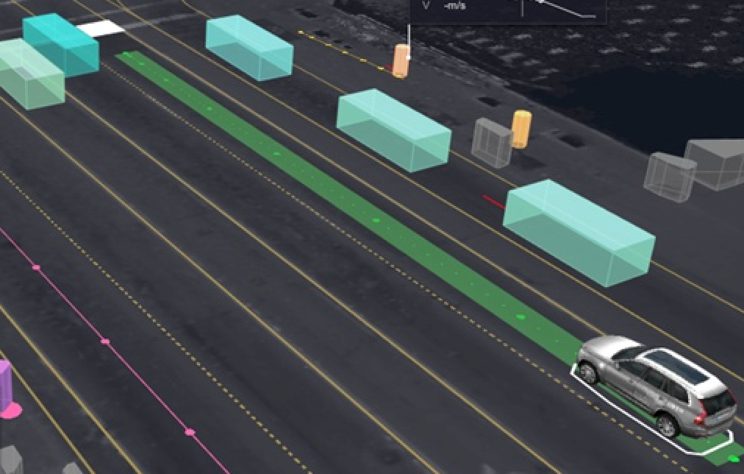
Fig.1 3D image of traffic simulation[1]
Concept Generation
Our system should hava four basic functions and several sub-fuctions with potential solutions. The whole functional synthesis picture is shown below.
Then we explore the inner relationship between the functions. Combining with inputs data set, we get the following graph.
After concept selection process, an overview of the concept diagram is shown below.
Then we explore the inner relationship between the functions. Combining with inputs data set, we get the following graph.
After concept selection process, an overview of the concept diagram is shown below.
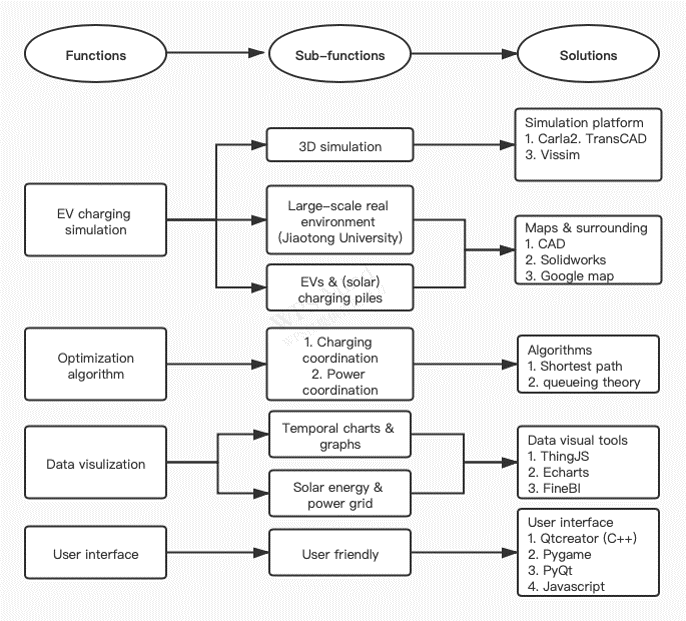
Fig.2 Functional synthesis

Fig.3 The whole set-up system
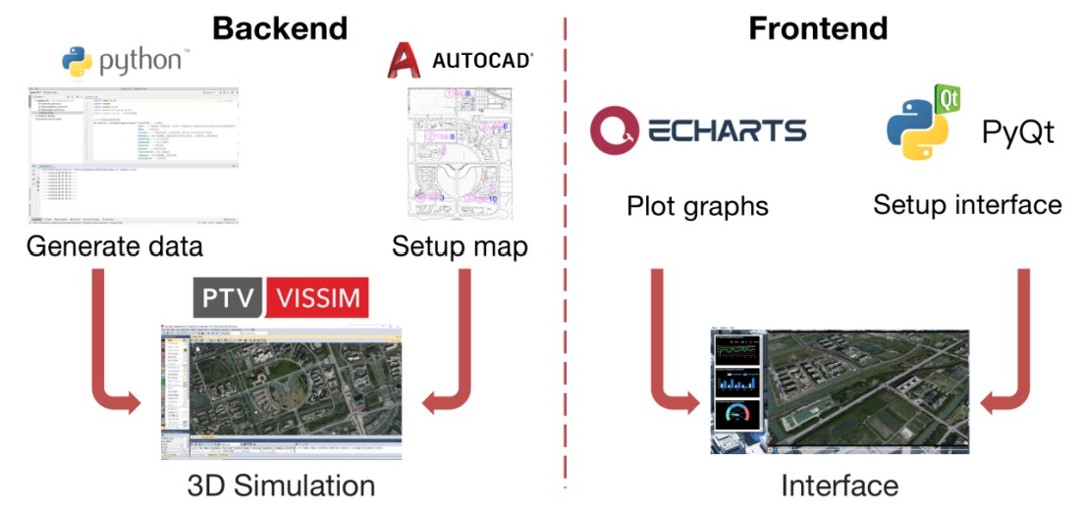
Fig.4 Concept diagram
Design Description
Our backend contains coordinated simulation and 3D simulation.
For coordinated simulation, we aim to: ① reduce waiting time ② reduce electricity consumption.
For 3D simulation, we visualize: ① traffic behavior at crossroads ② parking at parking lots.
For coordinated simulation, we aim to: ① reduce waiting time ② reduce electricity consumption.
For 3D simulation, we visualize: ① traffic behavior at crossroads ② parking at parking lots.
Our frontend contains chart plotting and interface building.
For chart plotting, we visualize dynamic values of: ① photovoltaic power ②battery power ③ grid power ④ demand.
For interface building, our interface can: ① display simulation videos ②display plotted charts ③ switch simulations.
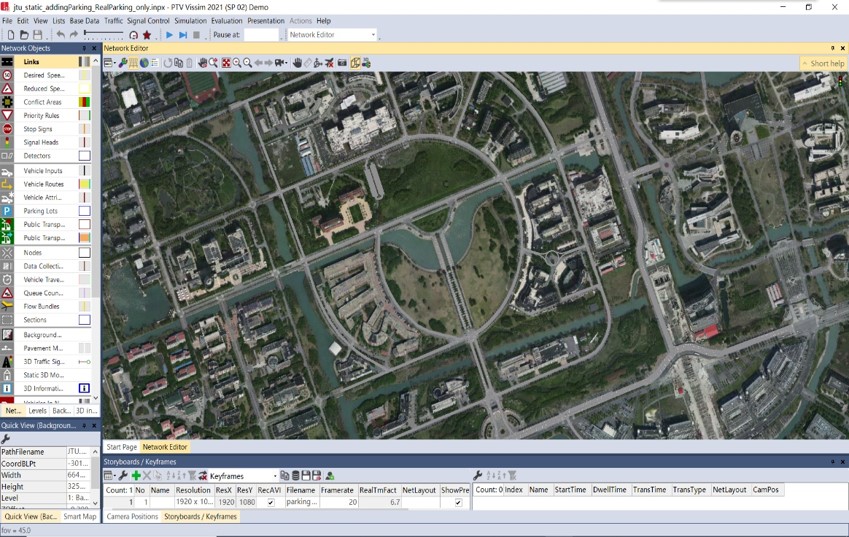
Fig.5 Backend
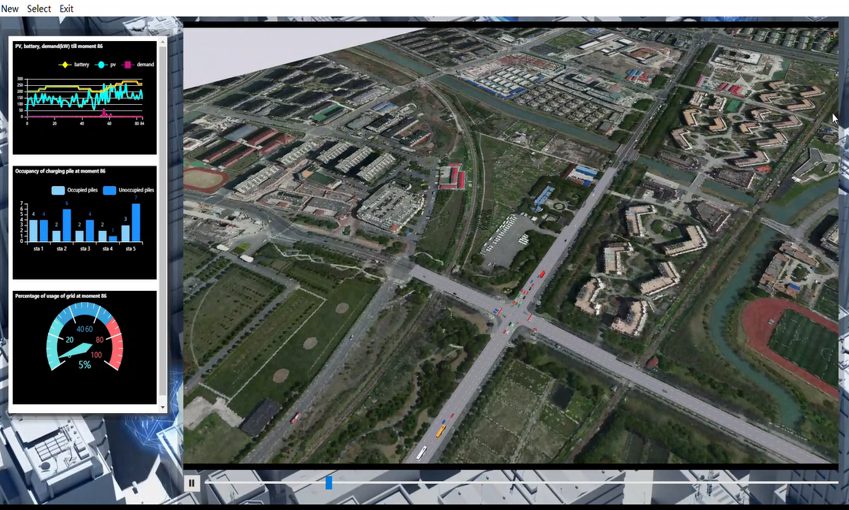
Fig.6 Frontend
Validation
Validation Process:
Since our project focus on the software engineering part, the validation should in turn evaluate the products we design.
For the backend, we check how many variables included in the algorithm and the quality of the simulation platform.
For the frontend, we check whether the dynamic charts are frequently and synchronizedly changing.
Validation Results:
According to validation part, most specifications can be met.
√ coverage area>=1,200,000 m^2
√ # of charing stations <= 40 √ # of vehicles <= 1000 √ ration of solar vs. electric charging stations =1:1
· elements of enviroment >=3
· redundanct influential factors >=3
√ waiting time of launching <=1min √ frequency for data visualizing = 2HZ √ means having been verified and · means to be determined.
Since our project focus on the software engineering part, the validation should in turn evaluate the products we design.
For the backend, we check how many variables included in the algorithm and the quality of the simulation platform.
For the frontend, we check whether the dynamic charts are frequently and synchronizedly changing.
Validation Results:
According to validation part, most specifications can be met.
√ coverage area>=1,200,000 m^2
√ # of charing stations <= 40 √ # of vehicles <= 1000 √ ration of solar vs. electric charging stations =1:1
· elements of enviroment >=3
· redundanct influential factors >=3
√ waiting time of launching <=1min √ frequency for data visualizing = 2HZ √ means having been verified and · means to be determined.
Conclusion
The use of solar charging stations can benefit the overall EV charging process. It can not only release the burden on the grid on average, the queuing time of each EV can also be shortened if we add more charging stations. The 3D simulation and data visualization offer a great way to vividly show the traffic and charging condition in a certain area, which may be helpful in the future populization of solar EV charging.
Acknowledgement
Sponsor: Chengbin Ma from SJTU Global College
Reference
UM-SJTU JOINT INSTITUTE